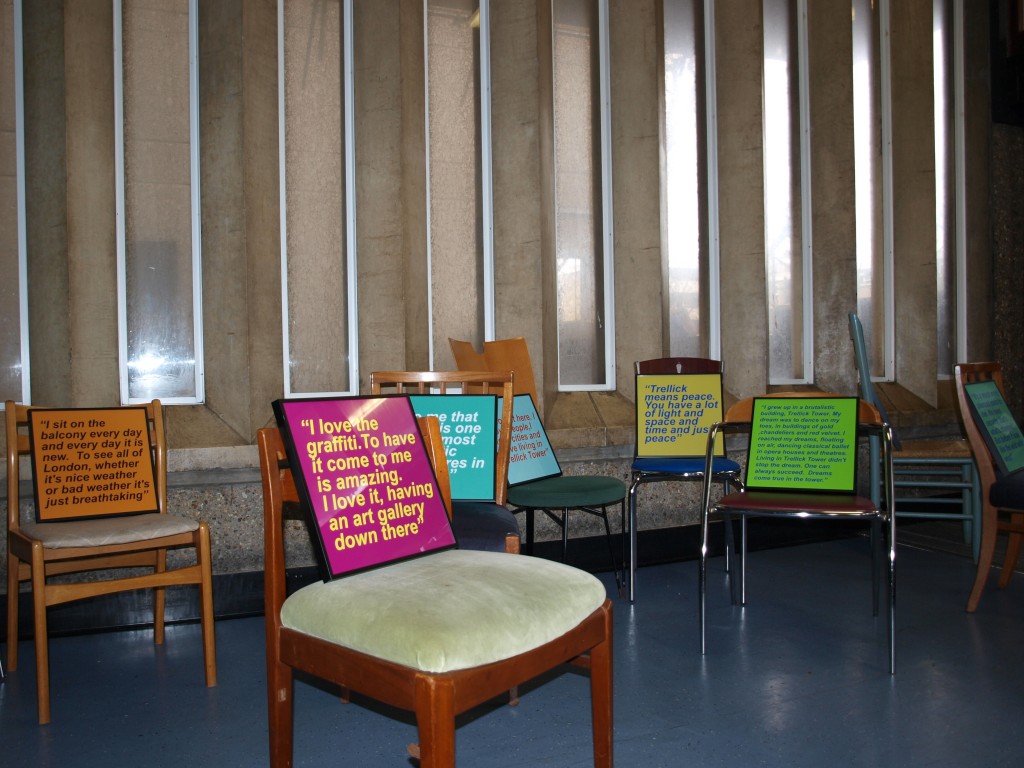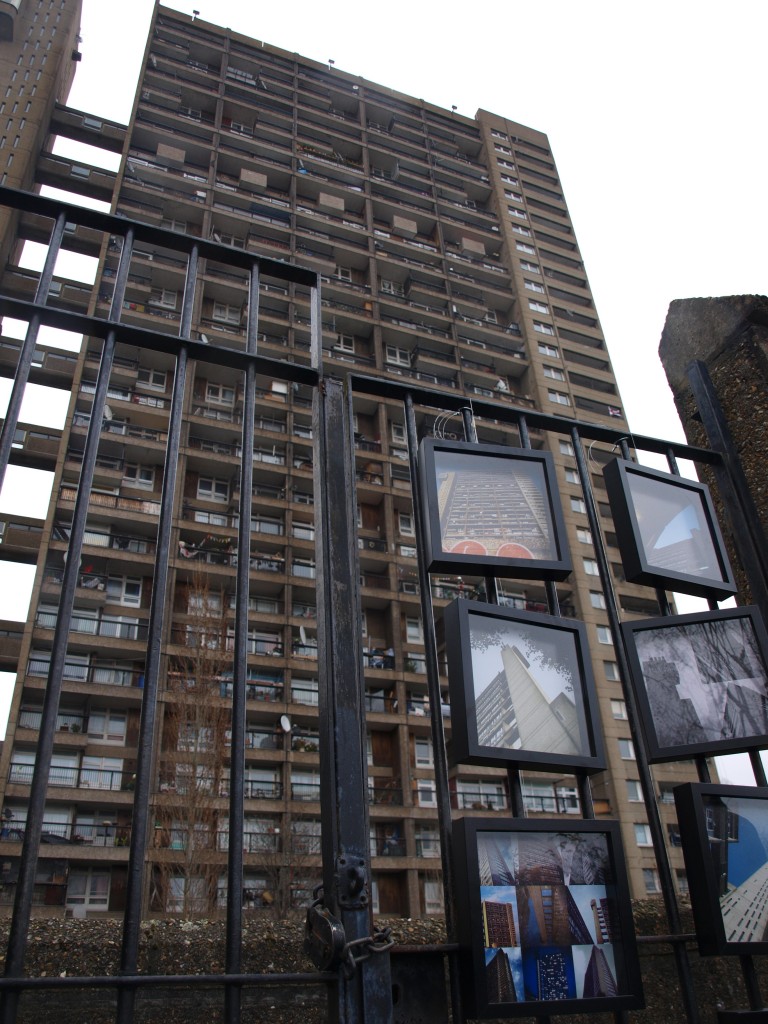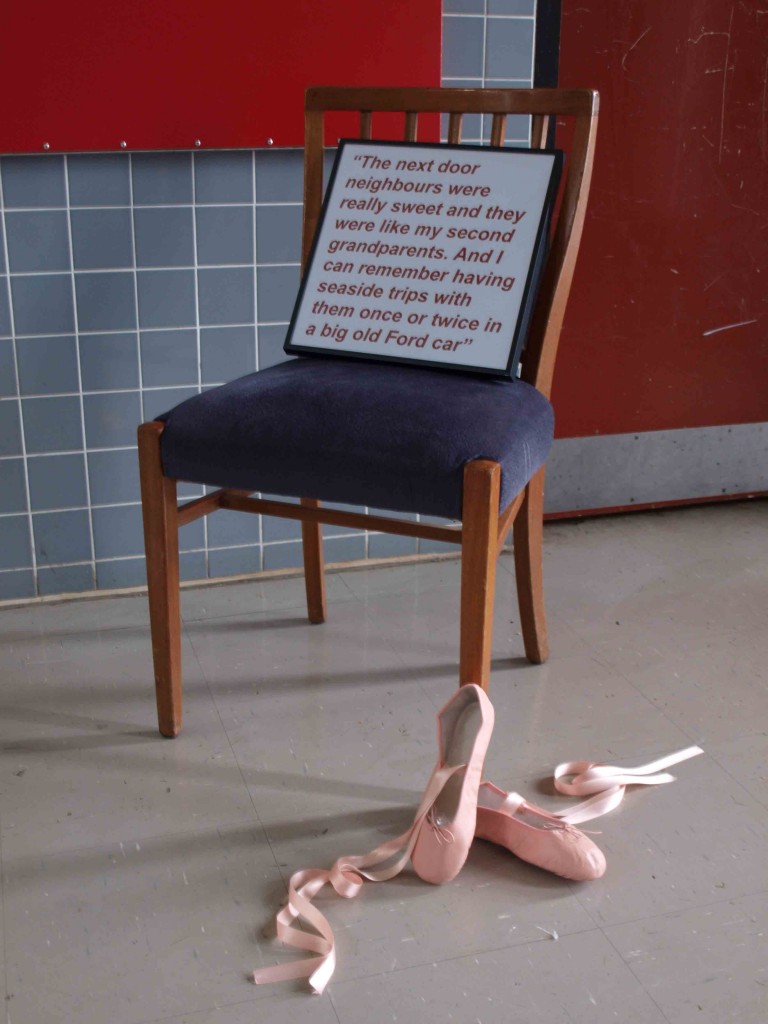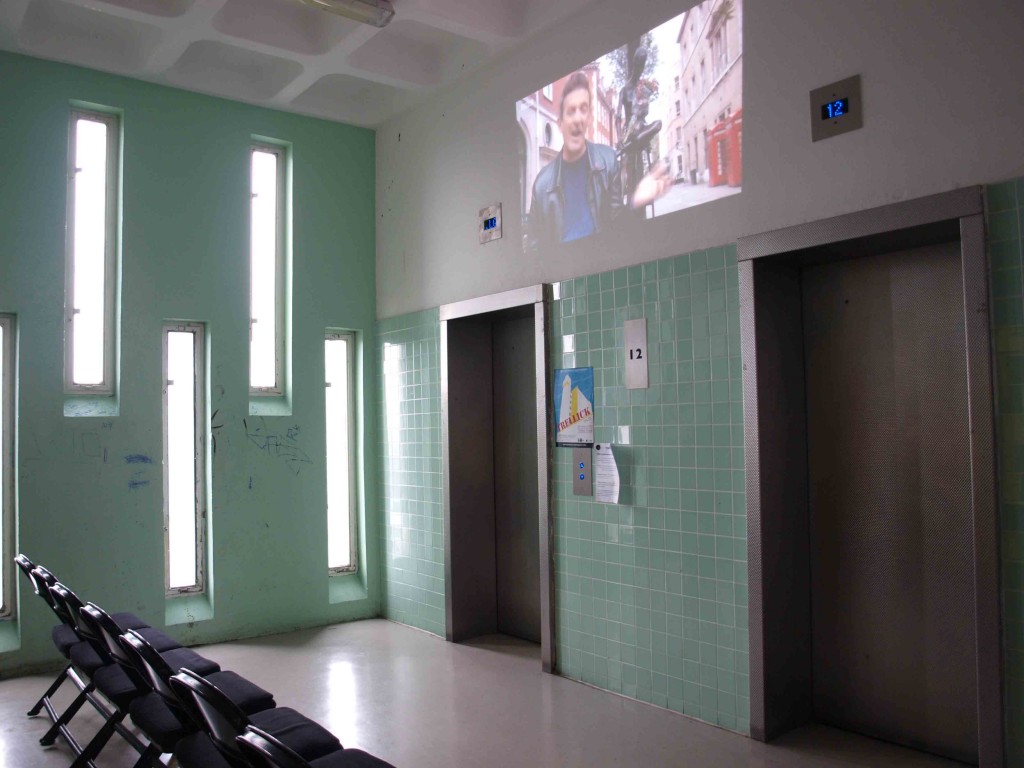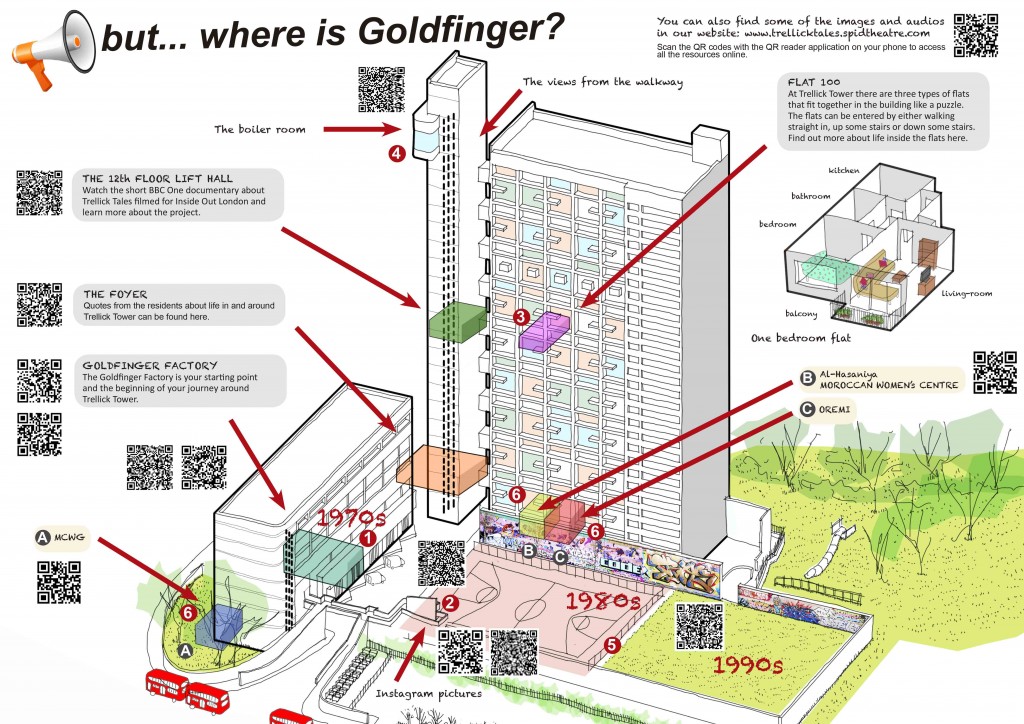This project, developed by SPID Theatre, presents a new layer of information that is located in-between the architectural space and the everyday life of their inhabitants through a series of performative elements in a specific architectural space. Performance is presented as a tool to make visible the existing relations between the space and the body, a series of processes that uncover a similar dimension as the one presented by Michel de Certeau in “The practice of everyday life”.
Trellick Tales unveiled the Thirdspace – in Soja’s words – resultant of mapping the lives of the residents through more than 40 years of the London Iconic building Trellick Tower by Erno Goldfinger. This project, funded amongst others by the 20th Century Society, the British Council of Arts and the BBC, allowed us to create an inherent layer of the building and its residents through interviews, and principally memories.
The creative process was based in a phenomenological approach to the building in which the creative team – an architect, a performer and a soundscape designer – went through different derives around the building. These derives were not only based on the spatial experience, but also on different conversations with the inhabitants of the building that emerged as a Thirdspace. As Edward Soja suggests, this Thirdspace is where “everything comes together (…) subjectivity and objectivity, the abstract and the concrete, the real and the imagined, the knowable and the unimaginable, the repetitive and the differential, structure and agency, mind and body, consciousness and the unconscious, the disciplined and the transdisciplinary, everyday life and unending story” (Soja, E., 1996:57).
There was a curatorial process that made a selection and put together the materials created by the inhabitants and people who were in contact with the building during the year that the project lasted. The derives gave us the locations and their recorded voices were carefully edited and mixed with other soundscapes. All this materials were located in different areas and moments of the experience proposed for the audience, creating an original psychogeography of this housing estate. The audience were given a map that guided them through the different spaces of the building, providing them at every moment with their geographical location
All the materials collected through the dialogue with the community were not only compiled into a performative exhibition that took place in different spaces of the building, but also in the creation of a website that will allow future visitors to access all this information. This digital afterlife of the project, that can be access by anyone at anytime, could be defined as a Thirdspace.
The phenomenological experience of the different physical spaces, is now complemented with this layer that will provide us with a further comprehension of the building, how it influences and shapes peoples lives, and how they are related to the container of their everyday lives. This approach to the architectural and urban spaces through performative processes, could be developed as a methodology for architectural analysis.

